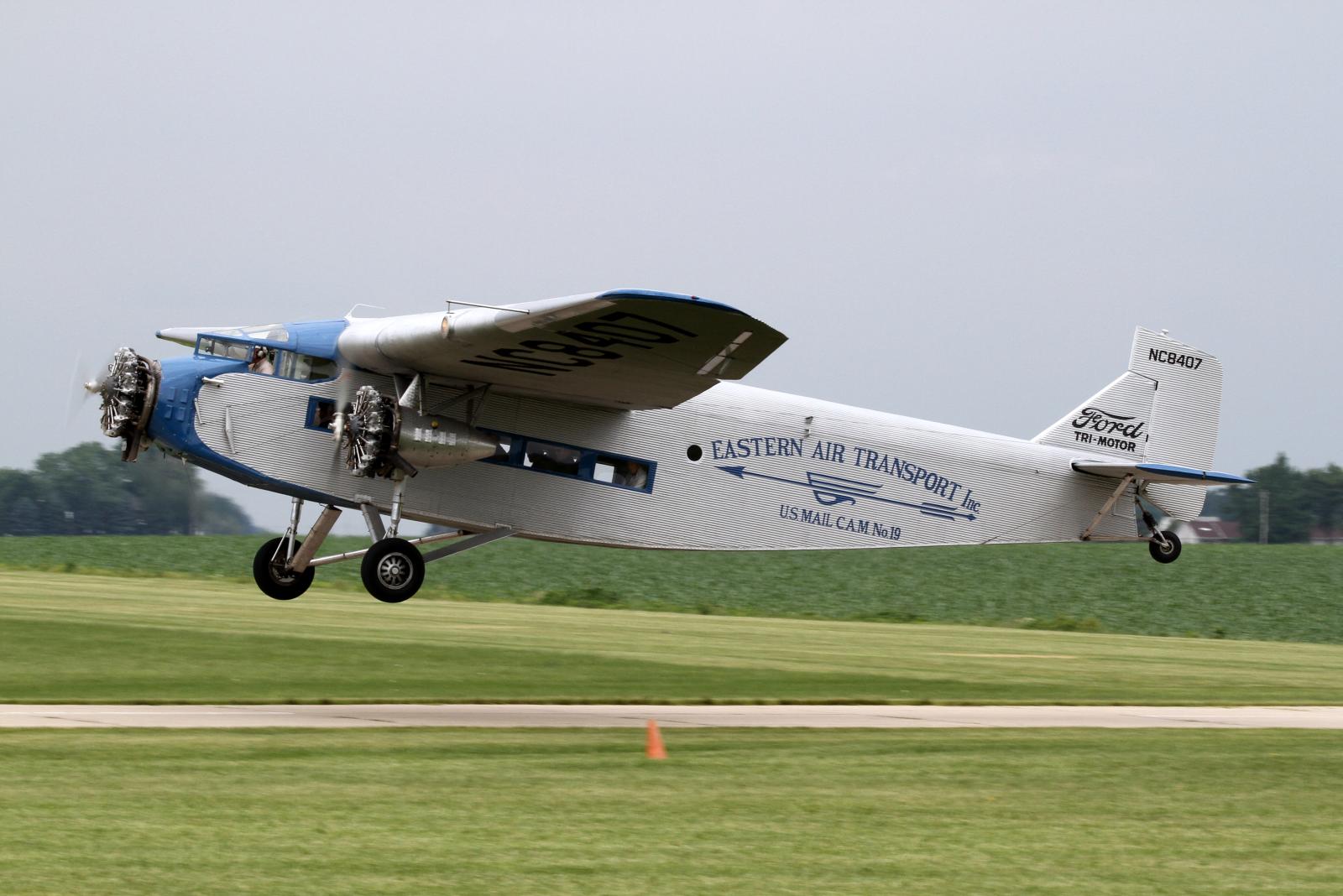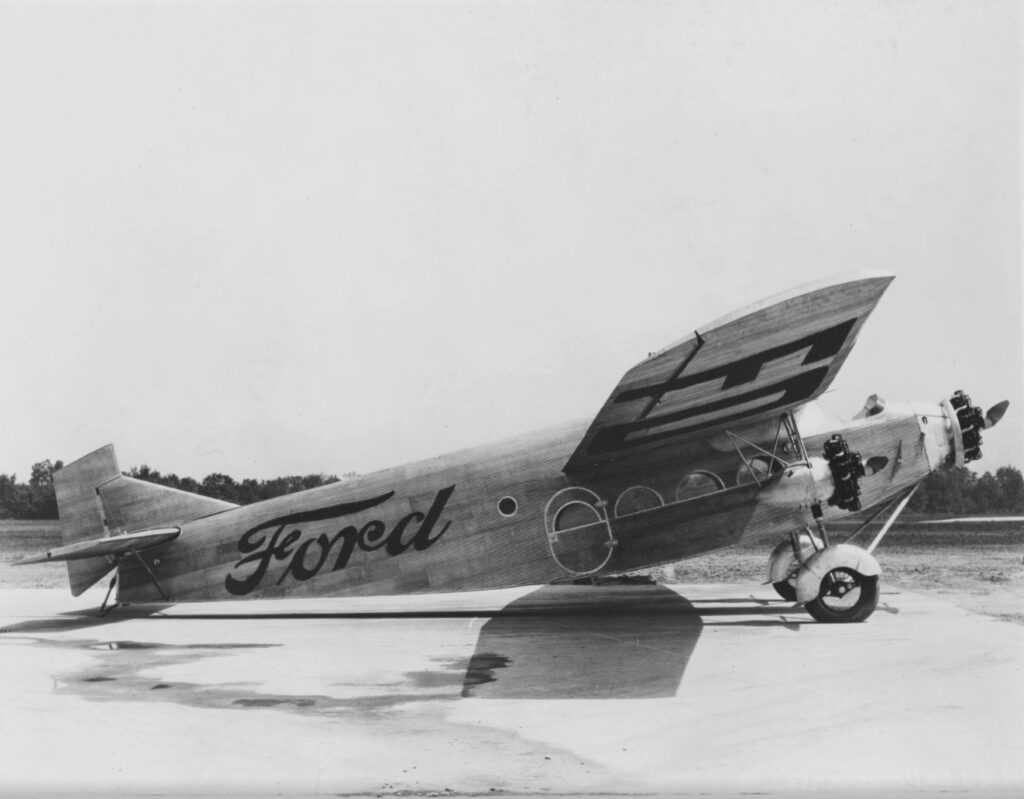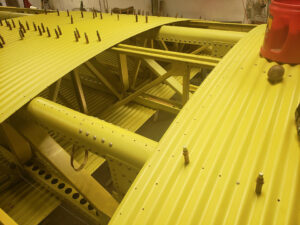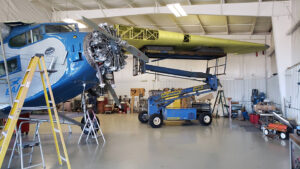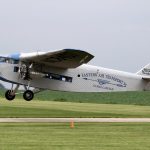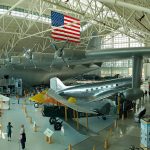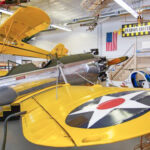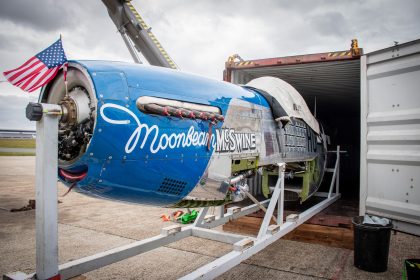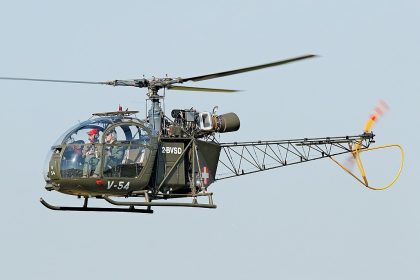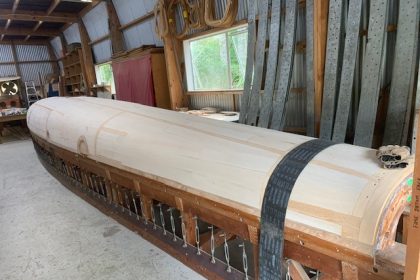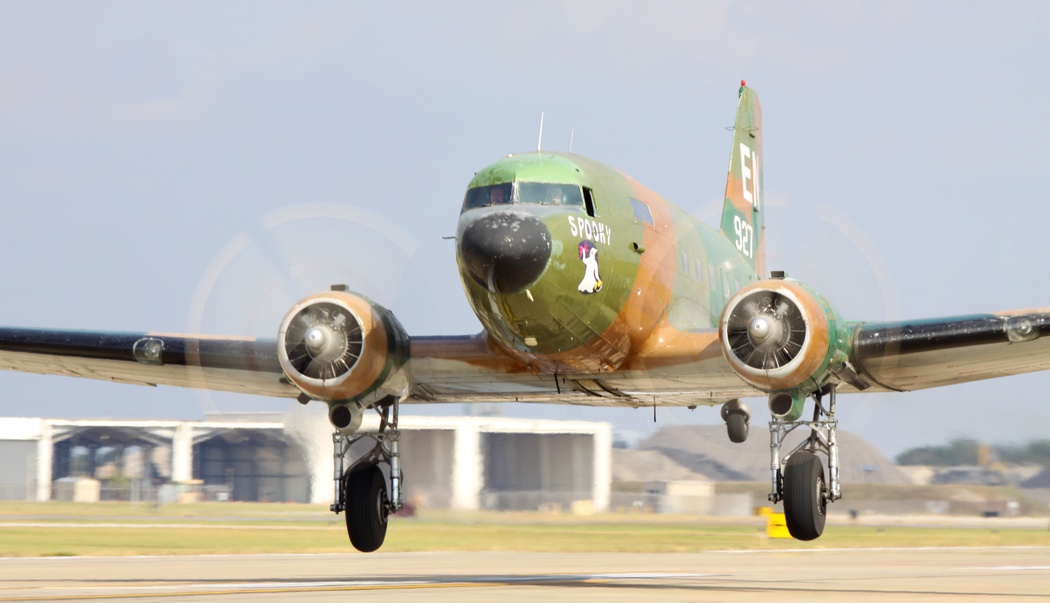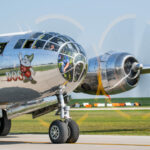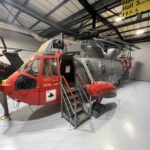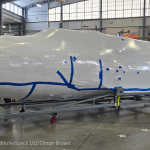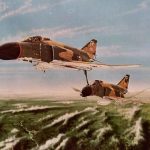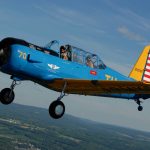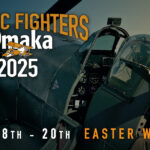The Experimental Aircraft Association’s Ford 4-AT-E Tri-Motor is one of just a handful of airworthy examples remaining of this iconic, 1920s aircraft. Affectionately known as the “Tin Goose” the type was one of America’s first mass-produced airliners.
The EAA’s website offers a detailed history of this extraordinary aircraft. All told, the Ford Motor Company built a total of 199 Tri-Motors; this may seem like a small number in comparison to most modern airliners, but it was significant for the period, when many still noteworthy breeds had production runs in single digits. The EAA’s Ford Tri-Motor was 76th model 4-AT-E variant and 146th production example overall to roll off Ford’s innovative assembly line; it first flew on August 21st, 1929, registered as NC8407. Days later, it joined Pitcairn Aviation, which itself was soon absorbed into a larger air carrier, Eastern Air Transport, belonging to a man named Clement Keys (who also owned North American Aviation at the time). NC8407 became the first aircraft to wear the Eastern Air Transport livery, a paint scheme replicated on the EAA’s Tri-Motor in the present day. (As many will know, Eastern Air Transport later became Eastern Airlines, one of the most important domestic air carriers in North America until deregulation precipitated its demise in the late 1980s.)
In 1930, Eastern Air Transport leased the Tri-Motor to Clement Keys’ newly-formed Compañía Nacional Cubana de Aviación Curtiss (now known simply as Cubana), where it inaugurated air service between Havana and Santiago de Cuba on the island of Cuba. The Dominican Republic’s government later flew the airplane.
EAA’s Ford Tri-Motor returned to the United States in 1949, ostensibly to take part in barnstorming operations. However, a year later, the aircraft moved from Miami, Florida to Phoenix, Arizona where it received more powerful engines for a new role in crop dusting. With a 450-hp engine in each wing and a 550-hp motor in the nose, the aircraft became the most powerful Model 4-AT-E ever flown! In 1955, the aircraft moved to Idaho, where it underwent further conversion to become an air tanker. This included mounting two 275-gallon borate tanks (complete with bomb doors) in the fuselage. Then, in 1958, further modifications allowed the aircraft to deliver smoke jumpers.
In 1964, after working for a variety of air spraying businesses, EAA’s Tri-Motor moved to Lawrence, Kansas where its new owner flew barnstorming operations. The aircraft took on a number of roles during this period, including a part in the 1965 Jerry Lewis comedy film, The Family Jewels.
In 1973, the aircraft was still performing air show rides around the country. While attending an EAA chapter fly-in in Burlington, Wisconsin during 1973, a severe thunderstorm ripped the plane from its tie-downs, lofted it 20 feet skywards and then crashed it back down onto its back. The EAA subsequently purchased the wreckage.
After an arduous, twelve-year effort by EAA staff, volunteers, and Ford Tri-Motor operators nationwide, the old Tri-Motor took to the skies under its own power once again, having its official post-restoration debut at Oshkosh during the 1985 EAA Fly-In Convention. The aircraft then went on display within the EAA AirVenture Museum until 1991 when it again returned to its former role of delighting passengers on its annual barnstorming tour across the U.S.
In November 2018, the EAA launched Project Tin Goose to raise funding for replacing the Tri-Motor’s now-aged wings. The Tri-Motor’s wing center section is currently being replaced.
Presently, the airplane sits in a hangar at Oshkosh. The restoration team has dismounted the Tri-Motor’s engines, propellors, landing gear, and outer wing panels to allow access to the wing center section, which they removed and sent to Hov-Aire, Inc., which has a lot of experience restoring Ford Tri-Motors at their facility in Three Rivers, Michigan. Hov-Aire is rebuilding the aircraft’s wing centre section and is presently re-installing brackets, pulleys, and mounts into the largely new-build structure before returning it to Oshkosh for installation. While this takes place, the EAA team is repairing and repainting the engine mounts for reinstallation.
The EAA’s hopes to have the aircraft reassembled for flight by March 31, 2023. Once the Tri-Motor flies again, EAA personnel will then address any remaining discrepancies and perform crew training; they hope to have the aircraft out on tour again by June, 2023.
Donations to the EAA Aviation Foundation help make developments like this to our aircraft. To support the EAA’s Tri-Motor visit FlyTheFord.org or send a check to EAA and specify “Ford Tri-Motor.”







